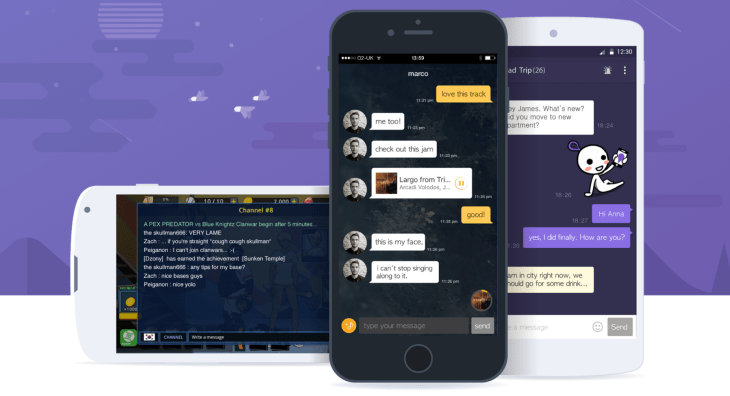If you go to any company’s website these days, you’re probably starting to see some chat functionality more and more often — and for good reason, as it’s a quick way for those companies to get in touch with their potential customers.
And SendBird, which launched in February this year out of Y Combinator, has tried to quietly begin eating up this space by giving developers tools to quickly roll out chat functionality for those companies. While the core version of SendBird is able to handle most use cases for organizations looking for chat functionality, co-founder John Kim said that as it’s continued to grow and bring on more companies, those niche cases are starting to fill out and the tools are more and more capable of helping larger organizations. The company said it’s raised $16 million in a new round of financing led by Shasta Ventures and August Capital thanks to that, along with existing investors Y Combinator and Funders’ Club.
“They usually have a very thorough list of use cases, a lot of people are used to WhatsApp or Slack,” Kim said. “They ask for features they’d like to build. Because we can work with some big companies, we go line-by-line and we cover 90% of their use cases off the bat. Others can be unique to their use cases, then we work hand-in-hand to build those features. Once we do that, the sales to the next customer become easier because we have a product that’s a little wider in coverage. That’s why we’re able to win bigger and bigger customers in a short period of time.”
SendBird’s core product is a development kit that helps companies begin to add chat functionality for their services. But Kim said much of the strength of the company is its ability to handle a big number of concurrent users, ranging all the way up to hundreds of thousands of people in the same channel simultaneously. There are plenty of obvious use cases here, like live streaming, and the company says it works with 1 million concurrent users in a single app and has 7,200 current integrations.
After launching in February this year out of Y Combinator, we haven’t heard much from SendBird — after all, it is an enterprise-y app geared toward developers. As an enterprise- and developer-focused app, the sales cycle for getting into those companies can be pretty long. But over time the pitch has become easier and easier, and now the company is starting to pitch other companies on their product instead of just relying on word of mouth, Kim said. That’s part of the growth phase of any company, and part of the reason why startups like this need to raise additional capital.
“Now [the goal is to get] the customer and the market to know [we] exist,” Kim said. “Based on research because our growth is mostly driven by inbound, a lot of customers still don’t know we exist. They saw a huge potential given the amount of inbound from companies big and small. We raised about $2.6 million cumulatively, and the capital efficiency really helped us.”
While there is a lot of focus on getting the name out there and attracting bigger clients, it’s been a little hard to articulate the changes that have come to the product — though there have been plenty, Kim said. One example he gave is whether companies want to notify people if they have been blocked or have it be a silent blocking process, allowing those users to still send messages to a person without realizing they’re blocked. It’s small changes like that, Kim said, that are part of the elements they want to invest in going forward.
There are, of course, going to be competitors, like Layer, which raised an additional $15 million in February this year. Those startups are already starting to attract the attention of potential clients, which means SendBird will have to figure out a way to sell itself as the best tool kit for developers looking to add some chat elements to their services.
